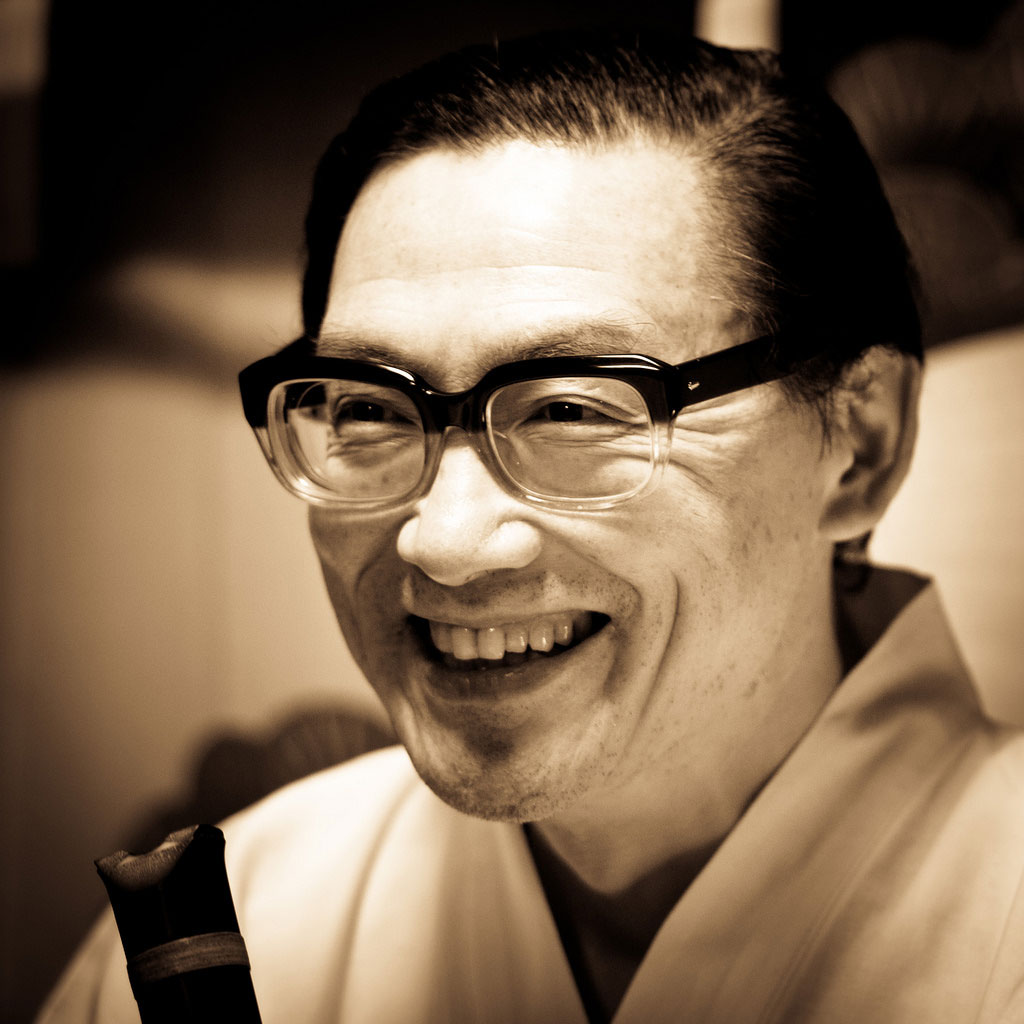
TANIGUCHI, Yoshinobu

Kinko Ryu Senshinkutsu Grand Master
TANIGUCHI, Yoshinobu
Born in Mineyama-cho, Kyoto in January 1947; currently residing in Mineyama-cho.
1966 (age 20): became fully paralyzed due to an accident induced injury to the neck bone; undergoes rehabilitation at Kyoto University Hospital, etc., for about 10 years.
1979 (age 32): recovers after 12 years of perseverance.
1981 (age 34): awarded the All Japan Kinko Ryu Shakuhachi Encouragement Concert First Prize (Master Tekkan Takahashi, chairman, Kinko Ryu Association, chief judge; Master Goro Yamaguchi, living national treasure, and Master Reibo Aoki, judges); for this achievement, presented with the highest title in Kinko Ryu, Senshinkutsu Grand Master.
1981 (age 34): awarded the Osaka Culture and Art Festival Award (commendation by the governor).
1981 (age 34): studies with Master Goro Yamaguchi, living national treasure, and under the tutelage of Master Yamaguchi, publishes an English language edition of shakuhachi text book.
1982 (age 35): concert tour of Europe (Ministry of Foreign Affairs Japan Festival), concert tour of China (10th anniversary of restoration of Japan-China diplomatic relationship, Ministry of Foreign Affairs).
1982 (age 35): becomes visiting professor at Oberlin Conservatory of Music (Oberlin Conservatory of Music, Oberlin College.), the oldest music college in the US, with the recommendation of Master Goro Yamaguchi and Master Katsuya Yokoyama, a world renowned shakuhachi player, and on their behalf.
1983 (age 36): publishes (1)shakuhachi text book and (2)Zen Shakuhachi performance CD collection in the US and Europe. Upon the request of the University of Oklahoma, records a video performance of Zen Shakuhachi, a traditional Japanese art, at a temple designated as a national treasure (a World Heritage site).
Performs and lectures on shakuhachi before 130 members of l’Orchestre de Paris in France. (The conductor was Bychkov, who was a student at Oberlin Conservatory of Music (Oberlin College and Conservatory) in the US.)
1984 (age 37): plays shakuhachi at Oberlin Conservatory of Music’s anniversary under the congratulatory speech delivered by the US President (Reagan); for this achievement, presented with “honorary master” by Master Katsuya Yokoyama.
1985 (age 38): returns to Japan to tend to his mother’s terminal cancer; suspends playing shakuhachi and builds and operates a restaurant / hotel for his mother.
1995 (age 48): resumes playing shakuhachi with the request from Master Reibo Aoki, national living treasure.
Teaches shakuhachi to winners of Tozan Ryu National Competition (Education Minister Award winners) and winners of Culture Agency Art Festival awards.
Teaches shakuhachi to professional shakuhachi players such as Dozan Fujiwara.
Becomes managing director of Japan Bamboo Society (Genso Sen, chairman).
Becomes councilor of Japan Bamboo Society.
Teaches shakuhachi to Kaen Oono, former chief abbot of Horyuji, Nara; Daichi Yamaguchi, former head priest of Korin-in, Daitokuji, Nara; and justices of the Supreme Court of Japan.
His last student was Mamino Yorita.
Masters with whom he studied in person:
Master Katsuya Yokoyama (world renowned shakuhachi player)
Master Rampo Yokoyama (successor of Azuma Ryu)
Master Kuzan Takahashi (leading authority of Fuke Shakuhachi)
Master Tekkan Takahashi (chairman, Kinko Ryu Shakuhachi Association)
Master Kyodo Tsukamoto (prominent figure of Nezasaha)
Master Hoan Kojima (41st Kanshu of Myoanji)
Master Renbo Aoki (living national treasure)
Master Goro Yamaguchi (living national treasure)
Master Todo Kaneyasu (Assistant Iemoto to Master Shigemi Inoue)
*In no particular order